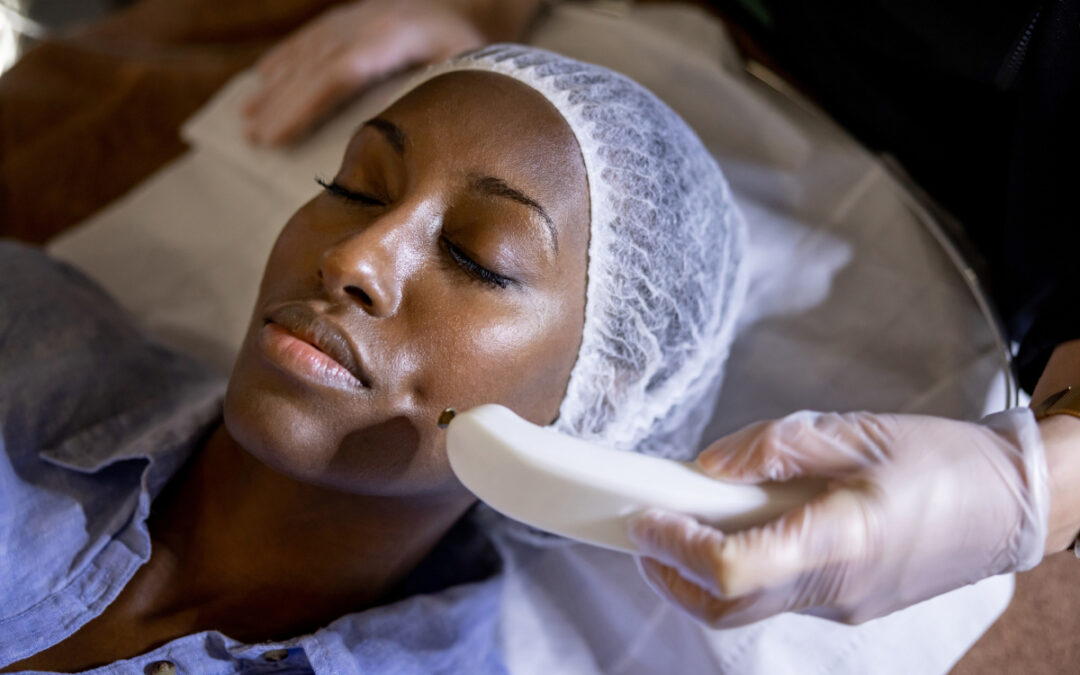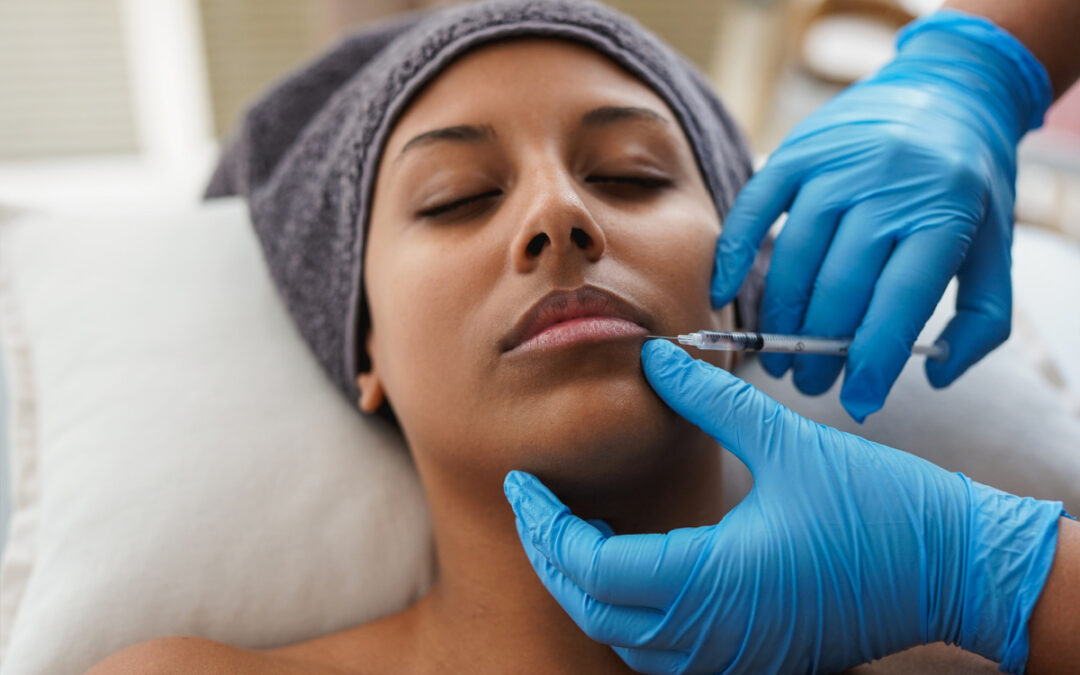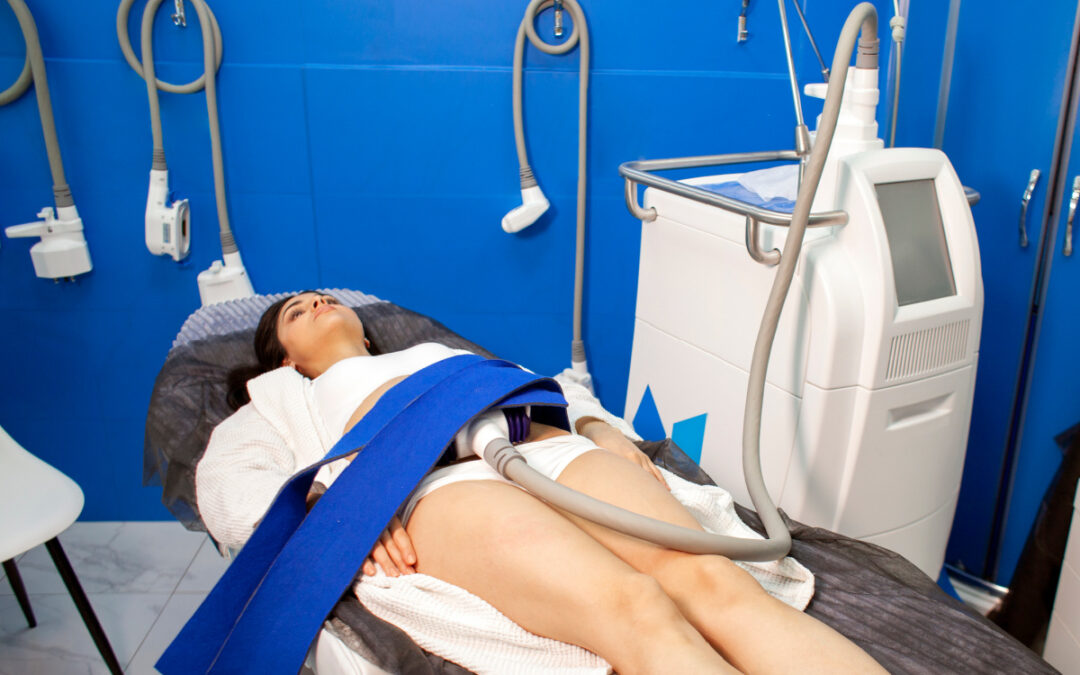Understanding the progression of skin aging, as well as its causes, can help you be more proactive about your skin health and preventive measures. Knowing why and how skin ages can also help you make more effective treatment choices when you wish to rejuvenate your skin.
In this blog, we dive into the following about skin health and aging:
Wrinkle formation and volume loss
Skin cell regeneration slows as we age and aging skin becomes less efficient at healing, retaining moisture, and secreting oils. Fine lines, wrinkles, and diminished facial volume are trademarks of aging skin with several factors contributing to them.
The aging process
The middle layer of the skin (the dermis) is made up of a network of collagen fibers and elastin which supports the outer layers of skin; the dermis provides your skin with visible plumpness and elasticity (the ability to “bounce back”). Over time, this dermis layer thins and the supporting network relaxes, allowing the skin to sink in and form wrinkles, due to loss of collagen and elastin.
On average, collagen production starts decreasing about 1% each year by around age 30. This adds up to a dramatic difference as the decades pass: a 2006 report showed a 68% decrease in collagen synthesis in old skin (aged 80+) versus young skin (aged 18-29).
Hormonal changes as you age can also affect your skin’s appearance, in that hormones change where the body produces fat and its quality. Facial features flatten and recede as the body produces less estrogen, thinning the cheek bones and shortening the jaw. Some patients will see a decrease in fat pads around the eyes and cheeks that once produced a youthful, volumized appearance and see an increase in fat stores in the lower face and neck areas (jowls). This can be caused by fat pads slipping as bone support wanes and/or hormone-induced lower-face fat collection.
Hormonal changes as you age can also affect your skin’s appearance, as hormones change where the body produces fat and its quality.
Muscle contracture
Habitual facial muscle contractions cause expression lines such as those at the outside eye corners (crow’s feet) and between the eyebrows on the forehead (frown lines). When we are young, our good skin elasticity prevents these expressions from causing visible wrinkles but, after a certain age, smiling, squinting, frowning, and other repetitive facial expressions will encourage the formation and prominence of wrinkles.
Lifestyle
Your lifestyle may contribute to wrinkle formation and volume loss.
Photoaging
The most common issue is photoaging, i.e. premature skin aging due to UV exposure, which breaks down collagen fibers. An enzyme called metalloproteinase is produced to create and reform collagen when UV light damages skin tissue, but despite this process, some healthy collagen fibers are damaged and become disorganized. Each time the skin goes through this process, it is less efficient at rebuilding collagen. Overtaxed, the support system that holds volumizing fat pads in place destabilizes and the skin becomes prone to wrinkles.
Stress
Long-term exposure to the stress hormone cortisol stimulates the degradation of collagen. Chronic stress can elevate the production of inflammatory molecules which damage collagen and make it rigid and less flexible.
Other contributing factors
Smoking accelerates the aging process and is greatly detrimental to skin health, and should be entirely avoided—this includes vaping. Heavy alcohol use, i.e. consuming more than one drink per day, is also associated with increased facial wrinkles, under-eye puffiness, volume loss, compromised blood vessels, and other signs of visible aging.
Changes in pigmentation
Hyperpigmentation can be caused by age, environmental factors, or trauma to the skin.
Age spots
Age spots or “liver spots” are small freckle-like blots made of concentrated clumps of melanin. Melanin absorbs UV light and is naturally produced when skin is exposed to the sun or tanning beds, creating a “tanned” appearance. When we are young, this visible effect is evenly distributed, but over time, age spots tend to develop. They are indicative of excessive UV exposure and your skin’s attempt to protect itself from further damage.
Age spots can vary in size and frequently show up as freckle-like marks on the face, shoulders, arms, and hands. They do not require medical treatment but should be monitored for irregularities that could be cause for concern.
Age spots do not require medical treatment but should be monitored for irregularities that could be cause for concern.
Melasma
This type of hyperpigmentation can be triggered by hormonal changes, including those that occur during pregnancy or when taking hormonal birth control. Melasma can also be caused by exposure to UV or infrared light. Melasma typically presents as brown or blue-gray patches on the skin, usually on the face. This is typically a chronic condition, though it can sporadically fade or disappear altogether on its own.
Skin inflammation and trauma
Hyperpigmentation can occur after inflammatory conditions like acne, eczema, psoriasis, lupus, or a skin injury. Aging skin is delicate and more susceptible to wounds and the healing process is slower compared to younger skin.
Medical conditions and medication
Hyperpigmentation can also be caused by medical conditions like Addison’s disease, which affects the adrenal glands, and hemochromatosis, a genetic condition that darkens the skin because of elevated iron levels. Skin can also react to certain medications like tricyclic antidepressants or antimalarial drugs, resulting in gray-colored skin patches. Chemicals in some topical skin treatments may also cause hyperpigmentation.
How to slow the aging process
Though the aging process is natural, we understand that many patients want to slow the process and seek treatments to reverse premature signs of aging.
Sunscreen
Research has proven that 90% of visible skin changes are the direct result of sun exposure. Protect your skin with a broad spectrum sunscreen with at least 30 SPF. There are a variety of options available to accommodate skin type, coverage needs, and lifestyle. We suggest:
- ZO® Skin Health’s Sunscreen + Primer SPF 30 — This hydrating, 12-hour time release antioxidant sunscreen doubles as a primer for a silky finish on its own or a smooth base for make-up application.
- Senté’s Invisible Shield – SPF 52 — This all-mineral tinted sunscreen protects against blue light and environmental pollutants in a quick-absorbing formula.
Skin care
In addition to sunscreen, quality skincare products can improve and slow the signs of aging. At PureLee Redefined, we only carry proven, physician-grade skincare products we trust to help our patients see results. With our intimate knowledge of skin and these products, we can design a curated skincare regime to address your skin’s needs.
Medical spa skin treatments
When a patient desires to go beyond sun protection and skin care, there are many options to increase your skin’s vitality:
- Facials can be customized to deeply cleanse and refresh the skin for a more radiant glow.
- Chemical peels can lighten dark spots, reduce lines and wrinkles, and refresh dull-looking skin.
- Microneedling stimulates collagen and elastin production to fight wrinkles and help rejuvenate your skin.
- RF microneedling combines traditional microneedling and radiofrequency energy to address a variety of skin concerns, from signs of aging to texture irregularities.
- Stem cell therapy can take years off your appearance by using the healing benefits of your own blood.
- Emface works by combining high-intensity facial electrical stimulation with radiofrequency technology to deliver real anti-aging results, like firmer skin and diminished wrinkles.
Injectables
Injectables offer a range of anti-aging benefits: neurotoxins can relax expressions that cause lines while dermal fillers bring youthful volume back into the skin.
- Botox® and other neuromodulators prevent wrinkle-causing muscle contractions to smooth and fill lines and wrinkles on the face.
- Dermal fillers help lift sagging skin, improve the look of lines and wrinkles, and restore youthful volume to the face.
No matter your age, we’re here for you
If you have noticed signs of skin aging and would like to discuss your options, we invite you to visit PureLee Redefined medical spa in Colorado Springs. Board-certified doctors and co-founders, Dr. Kenya Lee and Dr. Marvin Lee are here to pamper you, answer your questions, and evaluate your skin to find the best treatments and products for your skin’s health. We are committed to a holistic, continuous approach to skincare, ensuring our patient’s results will be both long-lasting and naturally beautiful.





